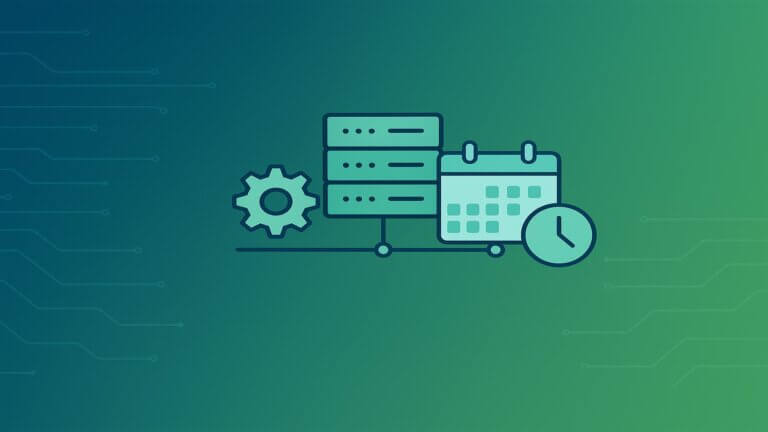Understanding how AWS S3 costs work can be complex due to the variety of pricing rules that depend on type, class, volume etc. Yet, Amazon Simple Storage Service (S3) is one of the most widely used cloud storage services, offering scalable, secure, and reliable storage for various data needs. That’s why navigating the costs associated with AWS S3 can feel overwhelming, especially as your storage needs grow and become more complex.
You might start by storing a few gigabytes, but before you know it, you’re dealing with terabytes of data across multiple regions, each with its own cost implications. Without a solid understanding of how AWS S3 pricing works, you could find yourself facing unexpected charges that quickly add up, affecting your budget and, ultimately, your bottom line.
This guide aims to demystify AWS S3 pricing by breaking down the various components that contribute to your overall costs. We’ll explore everything from storage classes and data transfer fees to the hidden costs of requests and replication. Whether you’re new to AWS S3 or looking to optimize your existing setup, this comprehensive guide will help you make informed decisions that align with your financial goals.
By the end of this guide, you’ll have a clearer picture of how to balance cost-efficiency with performance, reliability, and security. Let’s dive in and explore the key factors that influence AWS S3 pricing, so you can manage your cloud storage with confidence and clarity.
Overview of AWS S3
AWS S3 is designed to store and retrieve any amount of data from anywhere on the web. It is a highly durable and available object storage service that supports a range of use cases, from backup and restore to big data analytics. With features like versioning, lifecycle policies, and cross-region replication, AWS S3 provides a robust storage solution that can meet the needs of businesses of all sizes. The service is also integrated with various AWS tools, making it easier to manage and scale your storage as your data grows.
AWS S3 Pricing Components
Understanding the components that contribute to AWS S3 storage costs is crucial for managing your cloud budget effectively. AWS S3 pricing is divided into several categories:
- Storage Pricing: This is the cost associated with storing your data. The price varies depending on the S3 storage class you choose, with options ranging from the more expensive Standard class to the cost-efficient Glacier Deep Archive.
- Request and Data Retrieval Pricing: AWS charges for the number and type of requests you make to your S3 buckets. This includes GET, PUT, COPY, and LIST requests, as well as data retrieval costs, especially when accessing data stored in archival classes like Glacier.
- Data Transfer Pricing: Data transfer costs depend on the amount of data moved between S3 and the internet or other AWS regions. While inbound data transfers to S3 are generally free, outbound transfers can incur significant charges.
- Management and Replication Pricing: Costs associated with additional features like S3 Object Lambda, S3 Transfer Acceleration, and replication services also contribute to your overall S3 expenses.
Storage Classes and Their Pricing
AWS S3 offers several storage classes, each with its pricing structure:
- Standard: The default storage class designed for frequently accessed data. It offers high durability and availability, with a moderate price point.
- Intelligent-Tiering: This class automatically moves data between two access tiers (frequent and infrequent) based on changing access patterns, offering a cost-effective solution for data with unpredictable access patterns.
- Standard-IA (Infrequent Access): Ideal for data that is accessed less frequently but requires rapid access when needed. It is priced lower than the S3 Standard class but incurs retrieval costs.
- One Zone-IA: Similar to Standard-IA, but data is stored in a single availability zone, making it less resilient but more cost-effective.
- Glacier: Designed for long-term archival storage, Glacier offers low storage costs but with higher retrieval times and costs.
- Glacier Deep Archive: The most cost-effective storage class for data that is rarely accessed and can withstand long retrieval times.
Each storage class has its pricing model, balancing cost, durability, and access speed, allowing you to choose the best option based on your data’s requirements.
Data Transfer Costs
Data transfer pricing can significantly impact your AWS S3 costs, especially when moving large amounts of data. Here’s a breakdown:
- Inbound Data Transfer: Generally free, meaning you won’t incur costs for transferring data into AWS S3 from the internet.
- Outbound Data Transfer: Charges apply when transferring data out of AWS S3 to the internet or other AWS services in different regions. The cost increases with the volume of data transferred, so it’s essential to manage and minimize outbound traffic when possible.
- Pricing for Data Transfer within AWS Regions: Moving data between S3 and other AWS services within the same region is usually low-cost or free, but transferring between regions can be more expensive.
Management and Replication Pricing
AWS S3 offers various management features and replication options, each with associated costs:
- S3 Object Lambda: Allows you to process data as it is retrieved from S3, applying custom transformations. This service incurs additional compute costs based on the amount of data processed.
- S3 Transfer Acceleration: Speeds up the transfer of data over long distances to and from your S3 buckets, particularly useful for globally distributed teams. Pricing is based on the amount of data transferred using this service.
- S3 Inventory and S3 Batch Operations: These tools help manage your S3 data by generating reports and performing bulk operations, respectively. While they offer convenience, they also add to your costs.
- Replication Costs: AWS offers two replication options—Cross-Region Replication (CRR) and Same-Region Replication (SRR). CRR copies data between different AWS regions, which can be more expensive than SRR, where data is replicated within the same region. Both options incur additional storage and request costs.
Cost Optimization Strategies
Managing AWS S3 costs effectively involves implementing several strategies:
- Choosing the Right Storage Class: Match your data with the appropriate storage class to avoid overpaying for features you don’t need. For example, archival data should be stored in Glacier or Glacier Deep Archive rather than Standard or Intelligent-Tiering.
- Implementing Lifecycle Policies: Use S3 lifecycle policies to automatically transition data to more cost-effective storage classes or delete it after a certain period, reducing storage costs.
- Monitoring and Analyzing S3 Usage: Regularly review your S3 usage and spending patterns using tools like AWS Cost Explorer. Identify and eliminate unnecessary costs, such as unused or underutilized resources.
- Using S3 Intelligent-Tiering: For data with unpredictable access patterns, Intelligent-Tiering can automatically adjust the storage tier, optimizing costs without requiring manual intervention.
Tools for Monitoring and Managing AWS S3 Costs
AWS provides several tools to help you monitor and manage your S3 costs:
- AWS Cost Explorer: Allows you to visualize and analyze your AWS spending, including S3 costs, helping you identify trends and areas for cost reduction.
- AWS Budgets: Set custom cost and usage budgets, receive alerts when you exceed your thresholds, and keep your S3 costs under control.
- Third-Party Tools: There are also various third-party tools available that offer more advanced cost management features, such as granular monitoring, forecasting, and optimization recommendations.
AWS S3 is an essential tool for storing and managing data in the cloud, offering flexibility and scalability to meet a wide range of needs. However, without careful oversight, costs can escalate quickly. By breaking down the various pricing elements and understanding how each one impacts your overall spending, you can make informed decisions that align with your budget and business objectives. Selecting the appropriate storage classes, implementing lifecycle policies, and utilizing AWS’s cost management tools are key strategies for keeping expenses under control. Regularly reviewing your S3 usage and costs will help ensure that you’re getting the most value from your investment while avoiding unnecessary expenses. In a rapidly evolving cloud landscape, staying proactive about cost management is essential for maximizing efficiency and maintaining financial health.



